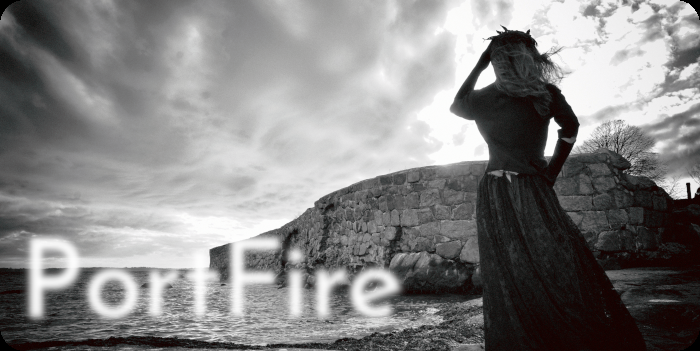The Depot was an answer when we most desperately needed it.
Mystic itself was going though an enormous change. The recession of the late 80’s/early 90’s was a new wrinkle in the fabric of American life. Mystic had always been a town where most kids were able to go to college, and then were expected to move away to more prosperous places. For those of us coming of age at the time, there were no prosperous places to relocate to. Almost all of my friends who were accepted at prestigious institutions ended up graduating from UConn, or other state schools, as the paradigm shifted. Home was to be the haven, and we decided to build it to our own specifications. This was a Mystic first, having a community of young artists stay in their hometown to build a dream. But we really didn’t have any other choice.
This aesthetic allowed an atmosphere of possibilty. With the Depot existing , Mystic folk could return home to a real world, and Mystic kids could begin to think that there was an alternative to leaving town. The construct of this new actuality was the courant of its time. We called it “Post”.
As in -“Post Everything”- a way to destroy the cultural constrictions of art by using language as a weapon as well as a defining prayer. Music as communique toward a level that would have symbiotic relationships flourish into audiences. The written word that demanded to be the spoken word, with Hozomeen Press, Fuse,The Root of Twinkle, and Albert Kausch’s poetry series at the Packer helping to drive that momentum. “Post” was the realization of a common goal. And yet, beyond this cultural currency, it was simply being in that house- and making it work- that liberated us.
My most lasting memory of the Depot is the summer of 1992, when we were clinging to each other in an effort to not have to move back home. Matt Hamilton rented the closet under the stairs for $50 a month. The rest of the original members were paying $106 per month to reside there. The Greenman Collective was being built at the same time. We were as dependent on each other as we would ever be in our lifetimes. And that was exactly what we were trying to create.
This became the common thread winding its way through the lives of the Depot members. How do we all coexist? What were the parameters? How would commitment to discipline be attained?
The days and nights at Depot were filled with conversation about how to achieve this lofty goal. And yet, as creative as everyone was, most of what we experienced there was pure maintenance- Michelle G. getting an eyeful of bleach while cleaning the bathroom, ceremoniously dusting the Hannan beer bottle collection, watering the Christmas Tree in 1991, finding a broom at anytime, moving folks between rooms and finding ink stains on skin from someone’s job under UV light, cleaning out the dryer filter, changing oil on the Relics van before a tour, taking Noonan to the hospital after he and Martin got into a post-John’s brawl over who knows what… But there were celebrations as well- polishing off 9 bottles of champagne when Bill Clinton won the Presidency in 1992, the group dinner after 17 Relics were accepted to play at the CMJ festival in NYC, sitting on the roof watching the Memorial Day parade, tears when CJ Stankewich left for Seattle, burning down the house after the 1992 Mystic New Music Festival.
So much of what has become of our musical culture began in those white walled rooms at 4 Roosevelt. Skimbleshanks rocked the Attic during New Years Eve 1991, and roughly ten years later became the powerhouse that was Low-Beam. How many 17 Relics road trips originated/ended at the Depot before they became Portersville for one last run at the ring? The Lotus cassette covers glued together in the Depot kitchen, becoming the first Hozomeen music release as everyone believed they would be the band to put us on the map, Lou Barlow holding court before the Sebadoh set at MNM 1992, Doug taking the mantle and running with it, helping to build the next wave. The last night shows of Golgo 13, Doug, The Afflicted, Jambalaya, and more… did anyone know what would become of the Depot in those early winter nights of 1991? Of course not.
And yet, actually- yes.
The element to me that most defines the Depot is its temporal permanence. As I said earlier, The Depot existed when it was most needed. And to those who were fortunate to call 4 Roosevelt home, as well as those in its orbit, the address became more of a lifeline than a lifestyle. The mindset that would be attributed to the Depot continues to exist, in the work of those people and the audience that shaped the art and the music. It was a success story in bleak times. It is a success story in modern times.
It is why we are all here.
